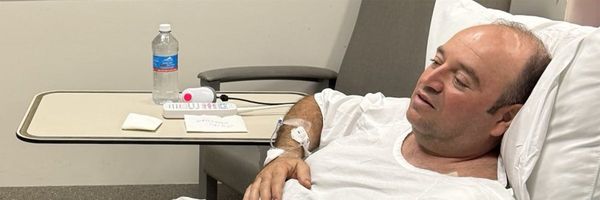
The stone walls of a 19th century jail that once held notorious bushrangers have been unearthed in the Tasmanian town of Perth.
Launceston Historical Society archaeology group convener John Dent, archaeologist Darren Watton and nearly two dozen volunteers last month uncovered the remains of the first Perth Gaol, about 20km south of Launceston.
Mr Dent just happens to be the great-great-great-great-great grandson of Constable James Hortle who led the charge in a shoot-out with notorious bushrangers Samuel Britton and John Beaven in 1829.
The pair had been on the run with half a dozen other wanted men after absconding from their masters, causing havoc for Perth.
Their reign of terror came to a brief end after the shoot-out between the bushrangers and police and soldiers.
The outlaws were thrown into Perth Gaol which was used at the time as a holding cell before they were sent to face their fate in Launceston.

But the system couldn't keep them down with Britton and Beaven back on the run.
Bounties of 250 pounds and hundreds of acres of land were offered for the bandits' capture - dead or alive.
It was an untimely end for Beaven in 1832 when he was betrayed by a gang member who wanted the bounty so shot him in the head before going to the authorities.
Britton's story came to an end between 1835-37 after he and his gang came under fire from police when he was shot in the thigh.
The outlaws escaped to Port Sorrell where Britton was left behind - never to be found again.
The excavation crew first learned of the approximately 200-year-old jail site while digging at the nearby Perth convict station.
"There was a plan that showed a jail quite a way away from site," said Mr Dent, who set up the investigation group in 2000.
"There were some yellow marks on the ground, which gave an indication that there was something under the ground, some stones or some walls."
"We did a bit more research and thought, 'this looks like it could be the site for the first Perth Gaol'."

With the permission of the landowner, the excavators went to work on the grassy lawn in the property's backyard.
It took nine days of excavation with diggers burrowing 600mm down to unveil the six metre square structure.
"The rooms were only probably a couple of metres by a metre so they weren't very big at all so it would be hard for people to lie down if it was a really tall person," Mr Dent said.
Among the buried treasures unearthed were a coin from 1827, jewellery and trinkets and a substantial number of buttons, clay smoking pipes, broken bottles and nails.

The jail, which had its first recorded mention in a newspaper in 1829, was sold into private hands and the facility moved closer to the town itself.
"It seems it's had another use because in the upper layers, we found quite a lot of late 1860s material so that indicates it was probably used either as a small house or a storeroom," Mr Dent said.
The site went out of use in the late 1800s with stone from the building taken and used in other buildings in the area before the grounds were levelled, he said.
The "significant" find adds to the few remaining 1820s buildings left standing in the town.
The uncovered items will be catalogued before being returned to the landowner who will display them in his home.
A report will be written up and Mr Watton and Mr Dent will present the findings at the Launceston Historical Society talk in November.







